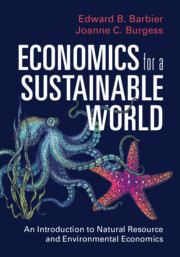Economic Analysis of Upstream-Downstream Water Allocation in Developing Countries
Project Summary
This project involved two case studies of upstream-downstream water allocation in developing countries. The first case study involved water allocation within a single country whereas the second study was concerned with international water allocation in a trans-boundary river basin.
Previous work on the first case study, the Hadejia-Jama'are River Basin, Northern Nigeria had estimated the downstream losses arising from upstream water diversion and compared the gains from the upstream projects to these downstream impacts. However, the Northern Nigeria case study needed to be updated in order to examine whether the recommendations arising from the analysis, especially regulated flood releases from the upstream dams, have been implemented in an effective manner. In addition, the potential role of water markets and other market-based instruments was examined to determine whether it is possible to implement these tools for efficient allocation of water in the river basin.
The second case study focused on the conflict over water diversion by the Farakka Dam on the Ganges River in India as the most likely candidate. Construction of the Farakka Dam was completed in 1974, and since then, the dam has been the focus of the dispute between India and Bangladesh over the allocation of the water of the Ganges. The recent 1996 treaty signed by Bangladesh and India attempted to determine a more equitable and efficient distribution of the water between the two countries. This study produced the following outputs:
1. A literature review of the current and potential use of water markets and other market-based instruments in developing countries to resolve water allocation problems in watersheds and river basins, particularly trade-offs between upstream and downstream competing uses of water.
2. Development of the second case study, the India-Bangladesh dispute over allocation of the Ganges River, including an economic analysis of the impacts of the recent 1996 Ganges water sharing treaty on the re-allocation of water between India and Bangladesh.
3. Assessed the potential implementation of water markets and other market-based instruments, as well as compensatory mechanisms such as regulated dam releases and water channels or other instruments, as efficient mechanisms for long-term management of competing upstream and downstream uses of water in the Ganges River Basin.
4. The Ganges River study also assessed whether there is the potential for an improved international agreement to develop efficient and equitable mechanisms to allocate water between India and Bangladesh.
Principle Investigator: Edward B. Barbier
Research Assistant: Anik Bhaduri
Funded by: Stanford Institute for Economic Policy Research
Journal Article:
Bhaduri, A. and Barbier, E.B. "International Water Transfer and Sharing: The Case of the Ganges River." Environment and Development Economics (Accepted)
Papers:
Barbier, E.B., 2003, "Upstream Dams and Downstream Water Allocation - The Case of the Hadejia'Jama'are Floodplain, Northern Nigeria," Water Resources Research Paper prepared for the Environmental Policy Forum, Center for Environmental Science and Policy, Institute for International Studies, Stanford University, November 7, 2002t
Bhaduri, A. and Barbier, E.B., 2003, "Water Transfer and International River Basin Cooperative Managementt - The Case of the Ganges "


